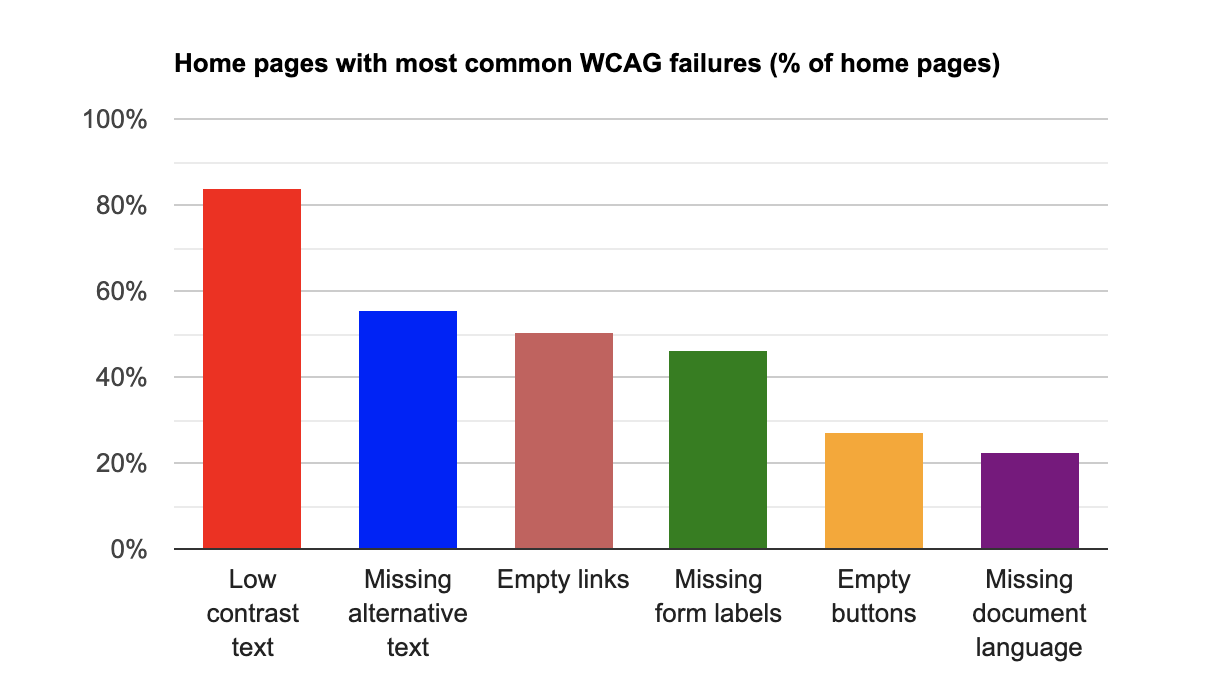Overview
Once your product design is implemented, there is a final step that should be taken before releasing your product into production. Developers will have done, of course, code testing such as TDD or BDD. The final step, however, requires checking HTML compliance to standards to ensure that your web pages are useable and accessible by your target users. Acceptable page loading times also need to be verified in order to minimize user pain.
The sad state of affairs of web accessibility is continually being tracked and measured by WebAim at their report The WebAIM Million in 2022. The top global 1 million website are tracked and evaluated. The results are not pretty. Great fodder for legal disputes if you are not careful. The summary results are below:

Available Verification Tools
- Basic Web Page Testing can be performed using developer tools in the browser such as Lighthouse. Lighthouse is best for page performance and SEO testing and also provides primary testing for HTML layout and accessibility.
- Semantic HTML Validation is more thoroughly performed by an on-line tools such as W3 HTML Validator. This tool checks for and reports on proper semantic HTML structures and completeness of attributes and ARIA controls.
- Accessibility Validation is becoming much more important these days as this topic is getting much more scrutiny. A comprehensive and deep checking tool such as WebAim Web Accessibility Evaluation Tool provides full checking with deep visibility into the code itself to help weed out problem areas.
- Colour Selection is, interestingly, an area that many web pages fail on. The UI / UX designer has delivered their theme and colour choices and although this design may look very attractive, it often has contrast issues. These are usually caught during the accessibility validation phase. Why not check colour combinations during the design phase and before production testing. As useful tools for this WCAG Contrast Checker.
- New Colour Checking standard is being proposed that better models the way the human eye perceives colour and includes text size and weight to give a better measure of how your content will be seen by the user. A deeper discussion by the author the proposed standard is Understanding Colors and Luminance and also New approach to Color Contrast. A tool that helps you explore this new standard is APCA Contrast Calculator.
